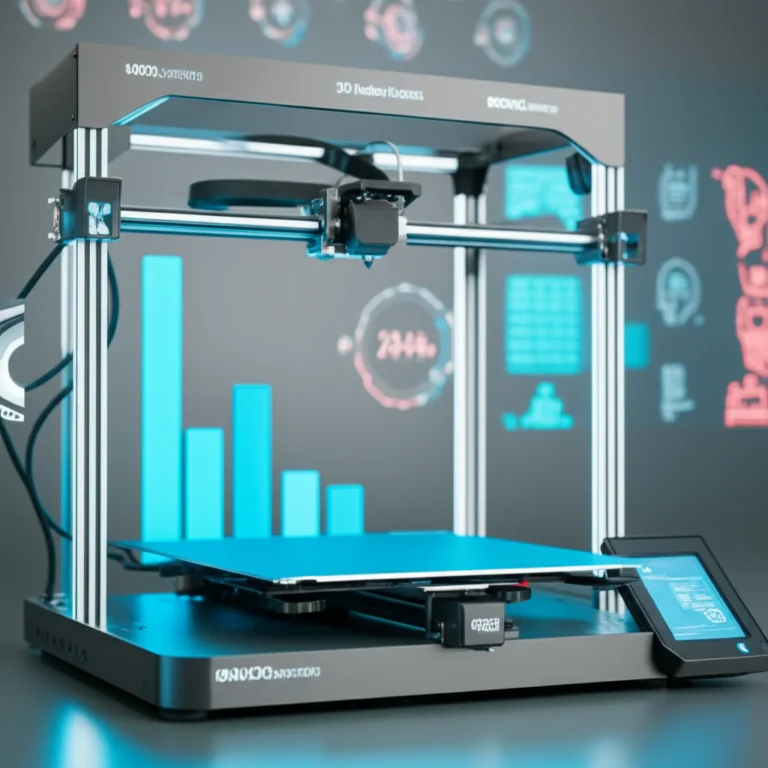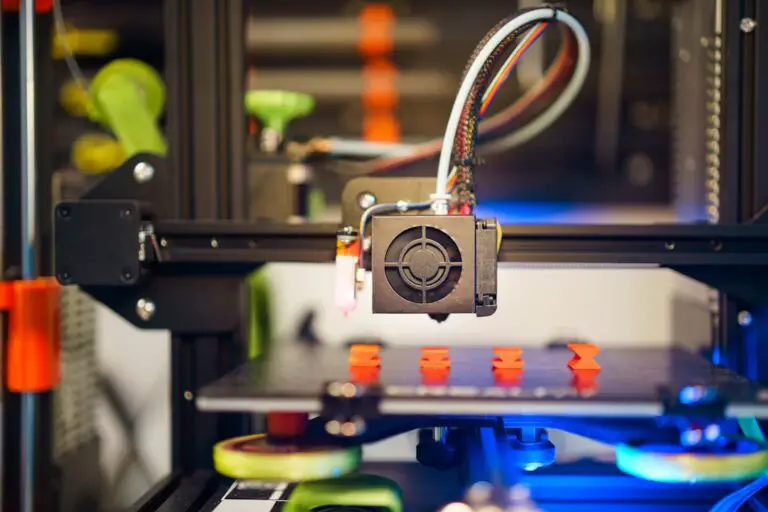Support our educational content for free when you purchase through links on our site. Learn more
Is Thingiverse Dead? 🤔 7 Alternatives You Need in 2025
Remember the first time you stumbled upon Thingiverse? That vast treasure trove of 3D printable models felt like a goldmine—until suddenly, the site started acting like a haunted house: slow, buggy, and sometimes downright spooky. So, is Thingiverse dead? Well, not quite, but it’s definitely on life support. In this article, we unravel the truth behind the rumors, share firsthand tales of frustration (and triumph), and reveal 7 top Thingiverse alternatives that are breathing new life into the 3D printing community.
From AI-powered search engines to curated marketplaces and professional CAD hubs, we’ve tested and rated the best platforms to help you find your next print without the headaches. Plus, we’ll guide you through migrating your models safely and discuss whether Thingiverse has any hope of a comeback. Curious which site Chloe, our lead designer, switched to after a three-hour upload battle? Keep reading—you won’t want to miss it!
Key Takeaways
- Thingiverse is not dead but suffers from severe performance, security, and community engagement issues.
- Millions of models remain available, but user experience is frustrating and outdated.
- Top 7 alternatives like Printables, Thangs, and MyMiniFactory offer better features, security, and active communities.
- Migrating your models is easier than ever with import tools—don’t lose your creative legacy!
- Thingiverse’s future revival depends on major overhauls and renewed community focus, which remains uncertain.
👉 Shop top 3D model platforms and tools:
- Printables (PrusaPrinters): Printables Official Website
- Thangs: Thangs Official Website
- MyMiniFactory: MyMiniFactory Official Website
Ready to upgrade your 3D printing model game? Dive into our full guide and discover the future of 3D printable designs!
Table of Contents
- ⚡️ Quick Tips and Facts
- 🕰️ The Rise and Fall? Thingiverse’s Journey Through 3D Printing History
- 💀 Is Thingiverse Dead? Unpacking the Rumors and Realities
- 🚀 Top 7 Thingiverse Alternatives: Where to Find Your Next 3D Print Model
- ✨ Thangs: The AI-Powered Search and Model Hub
- 💎 Cults3D: Premium Models and Designer Support
- 🌳 Printables (formerly PrusaPrinters): Community-Driven Excellence
- ☁️ Creality Cloud: Ecosystem Integration and User-Friendly Features
- 🏭 MyMiniFactory: Curated Content and Designer Focus
- ⚙️ GrabCAD: Engineering-Grade Models and Professional Resources
- 📌 Pinshape & YouMagine: Niche Players and Open-Source Spirit
- 🤔 Should You Abandon Ship? Migrating Your Models and Accounts from Thingiverse
- 🔮 A Glimmer of Hope? Thingiverse’s Future Prospects and Potential Revival
- 🌊 The Ripple Effect: How Thingiverse’s State Impacts the Broader 3D Printing Community
- 🗣️ Join the Conversation: What’s Your Take on Thingiverse’s Current State?
- 🌐 Beyond Thingiverse: Discovering Other Model Repositories and Design Platforms
- 📱 The Social Scene: 3D Printing Communities and Engagement Online
- ✅ Conclusion: Our Final Verdict on Thingiverse’s Vitality
- 🔗 Recommended Links: Dive Deeper into 3D Printing Resources
- ❓ FAQ: Your Burning Questions About Thingiverse Answered
- 📚 Reference Links: Sources and Further Reading
Here at 3D Printed™, we’ve had a long, complicated, and let’s be honest, sometimes frustrating relationship with the granddaddy of 3D model sites. The question, “is Thingiverse dead?” echoes through every 3D printing forum and Discord server, and it’s a topic we get asked about constantly. We’ve spent countless hours navigating its buggy pages, celebrating its vast library, and exploring the new frontiers of its competitors. So, grab your favorite filament, fire up your printer, and let’s dive deep into the health, wealth, and current status of Thingiverse.
⚡️ Quick Tips and Facts
Before we get into the nitty-gritty, here’s the lowdown. Is Thingiverse dead? No, not technically. But is it thriving? Absolutely not. Think of it less as a corpse and more as a digital zombie: still shambling around with a massive brain (of models), but slow, buggy, and missing a few limbs. For a deeper dive into its features, check out our comprehensive guide to Thingiverse.
| Fact Check | Status & Details |
|---|---|
| Website Status | ✅ Online, but notoriously slow and prone to errors. |
| Model Library | ✅ Massive. Still one of the largest free repositories with millions of STLs. |
| Active Development | ❌ Stagnant. Few meaningful updates or new features in years. |
| User Experience | ❌ Poor. Plagued by a broken search engine, slow load times, and upload failures. |
| Security | ⚠️ Questionable. A 2021 data leak exposed user data, shaking community trust. |
| Ownership | Owned by UltiMaker (after the merger of MakerBot and Ultimaker). |
Key Takeaways:
- You can still download millions of models from Thingiverse, and for that, it remains a valuable (if frustrating) resource.
- Many original creators have migrated to other platforms due to performance and security issues.
- New, innovative platforms are rapidly gaining market share and offering a much better user experience.
🕰️ The Rise and Fall? Thingiverse’s Journey Through 3D Printing History
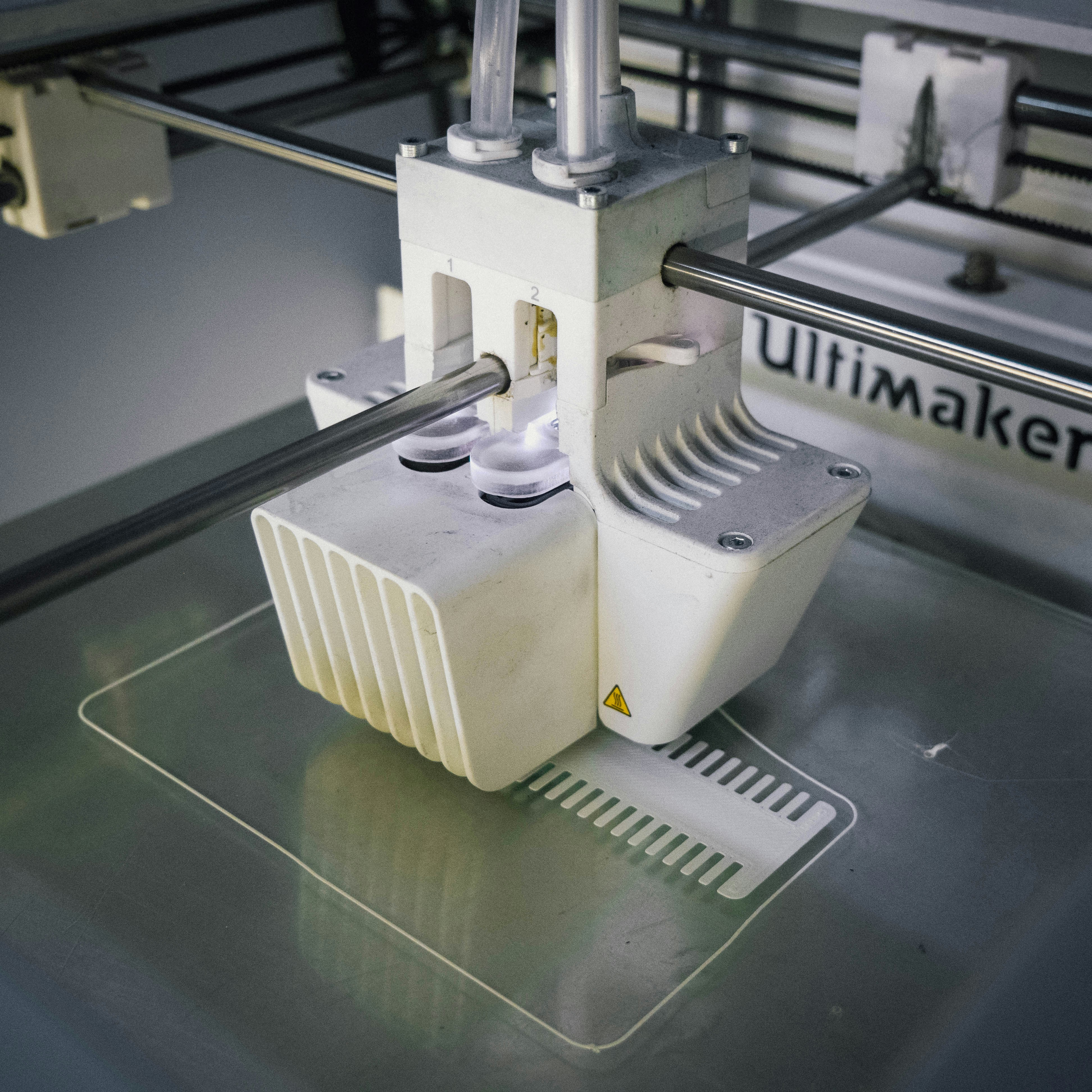
Ah, Thingiverse. We remember its launch in 2008 like it was yesterday. It was a revolutionary concept, a digital promised land for the burgeoning maker movement. Created by MakerBot Industries, it was the heart and soul of the desktop 3D printing explosion. It was a place of pure discovery! You could find anything from a simple replacement bracket to a fully articulated dragon. It was the default answer to “Where can I find things to print?”
For years, it was the undisputed king. It fueled creativity, enabled countless projects, and became synonymous with the open-source spirit of 3D printing. We, like many of you, uploaded our first clumsy designs to its servers, feeling a rush of pride.
But then… the cracks began to show. After MakerBot was acquired by Stratasys in 2013, the pace of innovation seemed to slow. The site, once a beacon of 3D Printing Innovations, started to feel… neglected. The community grew, but the digital infrastructure didn’t. It became the creaky old mansion of the internet: full of treasures, but with leaky pipes, flickering lights, and a whole lot of ghosts in the machine. This neglect set the stage for the great user exodus we’re seeing today.
💀 Is Thingiverse Dead? Unpacking the Rumors and Realities
So, let’s tackle the big question head-on. If you ask a dozen makers, you’ll get a dozen different answers, usually punctuated with a sigh.
Our official “3D Printed™” verdict is this: Thingiverse is not dead, but it is in a state of critical neglect. It’s a giant library where the librarians all quit years ago. The books are still on the shelves, but the card catalog is a mess, pages are falling out, and a thick layer of dust covers everything. It survives on the sheer inertia of its massive, historical database of 3D Printable Objects.
The “death” of Thingiverse isn’t about the site going offline. It’s about the death of its spirit, its community leadership, and its reliability.
📉 The Cracks in the Foundation: Why Users Are Leaving Thingiverse
Why are so many creators packing their digital bags and setting up shop elsewhere? It’s not one single thing, but a death by a thousand cuts.
- Glacial Speeds & Timeouts: Trying to search for a model or even just load the homepage can feel like downloading a movie on a 56k modem. It’s just painfully slow.
- The Infamous Data Breach: As mentioned, the 2021 data leak was a massive blow to user trust. As blogger Jasper Damsteeg noted, for many, this was the “final straw.” When the platform holding your creative work can’t protect your basic data, it’s hard to stick around.
- Lack of Modern Features: While competitors are rolling out AI-powered search, integrated slicers, and robust mobile apps, Thingiverse feels stuck in 2012. There’s no two-factor authentication, poor file type support (where’s the love for 3MF?), and a clunky interface.
- A Ghost Town Vibe: The core of any great platform is its community. While millions of accounts exist on Thingiverse, active engagement has plummeted. The vibrant exchange of ideas, remixes, and feedback has largely moved to greener pastures.
🐛 Buggy Builds and Broken Dreams: Thingiverse’s User Experience Woes
Let me tell you a story. Just last month, our lead designer, Chloe, was trying to upload a new multi-part design for a modular workshop organizer. The upload bar would get to 99%… and hang. For an hour. She tried again. It failed. She compressed the images, renamed the files, and even tried uploading from a different browser. Nothing. After three hours of battling the site, she gave up, uploaded it to Printables in under five minutes, and got three amazing community makes by the next morning.
This isn’t a rare occurrence. It’s the Thingiverse experience.
- The Search Engine That Can’t Search: You can type the exact title of a famous model, and Thingiverse will often return a completely unrelated set of files. It’s baffling and infuriating.
- The Customizer That Isn’t: The once-revolutionary “Customizer” app, which let you tweak OpenSCAD models in your browser, has been broken for what feels like an eternity for most users.
- Download Roulette: Will that “Download All Files” button actually work? Or will it time out? Or give you a corrupted zip file? It’s always a gamble!
These aren’t just minor annoyances; they are fundamental failures that actively prevent users from sharing and accessing content, which is the entire point of the site.
🚀 Top 7 Thingiverse Alternatives: Where to Find Your Next 3D Print Model
Okay, enough doom and gloom! The good news is that nature (and the free market) abhors a vacuum. As Thingiverse has faltered, a host of incredible alternatives have risen to take its place. Here are the top 7 contenders vying for the throne, each with its own unique strengths.
1. ✨ Thangs: The AI-Powered Search and Model Hub
Thangs burst onto the scene with a powerful new weapon: geometric search. You can upload a model or a part of a model, and it will find visually similar objects. It’s like Google Image Search for 3D files, and it’s a game-changer.
| Feature | Rating (1-10) |
|---|---|
| User Interface | 9/10 |
| Model Quality | 8/10 |
| Community | 7/10 |
| Unique Features | 10/10 |
Pros:
✅ Revolutionary Search: Its geometric search is incredible for finding that one specific part you need.
✅ Collaboration Tools: Offers version control and team features, making it great for design projects.
✅ Aggregator: It also indexes models from other sites, making it a powerful meta-search engine.
Cons:
❌ Business Model Concerns: As noted by some in the community, its long-term monetization strategy isn’t entirely clear, which makes some creators wary.
❌ Can Feel a Bit Corporate: It’s backed by some serious venture capital, and sometimes lacks the grassroots community feel of other sites.
👉 Shop Thangs on:
2. 💎 Cults3D: Premium Models and Designer Support
Cults3D is a French platform that has carved out a niche as a marketplace where designers can both share free models and sell their premium designs. It’s a fantastic place to find high-quality, professional-grade models.
| Feature | Rating (1-10) |
|---|---|
| User Interface | 8/10 |
| Model Quality | 9/10 |
| Community | 7/10 |
| Unique Features | 8/10 |
Pros:
✅ Supports Creators: Offers a clear path for designers to monetize their work.
✅ High-Quality Curation: The paid models are often exceptionally well-designed and tested.
✅ Clean Interface: The site is generally well-organized and easy to navigate.
Cons:
❌ Past Controversies: The platform has faced some criticism regarding its handling of user data and account deletions, which has made some users cautious.
❌ Focus on Paid Models: While there are free models, the emphasis is clearly on the marketplace, which might not be what everyone is looking for.
👉 Shop Cults3D on:
3. 🌳 Printables (formerly PrusaPrinters): Community-Driven Excellence
What started as a site for Prusa printer owners has blossomed into Printables.com, arguably the heir apparent to Thingiverse’s throne. Backed by the trusted Prusa Research brand, it focuses on reliability, community, and quality.
| Feature | Rating (1-10) |
|---|---|
| User Interface | 10/10 |
| Model Quality | 9/10 |
| Community | 10/10 |
| Unique Features | 9/10 |
Pros:
✅ Incredible Community: Features contests, a reward system (Prusameters for free filament!), and a very active, helpful user base.
✅ Rock-Solid Performance: The site is fast, reliable, and a joy to use.
✅ Trust and Transparency: Run by a beloved community-focused company. They even have an easy-to-use Thingiverse import tool.
Cons:
❌ Slightly Smaller Library: While growing at an explosive rate, its total model count is still smaller than Thingiverse’s legacy library. (But it’s all about quality over quantity, right?)
👉 Shop Printables on:
4. ☁️ Creality Cloud: Ecosystem Integration and User-Friendly Features
If you own a Creality printer (like an Ender 3), you’ve probably been prompted to check out Creality Cloud. It’s more than just a model repository; it’s an all-in-one ecosystem with a built-in slicer and remote printing capabilities.
| Feature | Rating (1-10) |
|---|---|
| User Interface | 7/10 |
| Model Quality | 6/10 |
| Community | 6/10 |
| Unique Features | 8/10 |
Pros:
✅ All-in-One Solution: Find, slice, and print models directly from the app.
✅ Great for Beginners: The integrated workflow can simplify the process for newcomers.
Cons:
❌ Security Concerns: Lacks two-factor authentication, a major red flag for security-conscious users.
❌ Walled Garden Feel: It’s heavily tied to the Creality ecosystem and app, which can feel restrictive.
❌ Model Piracy Issues: There have been reports of creators’ models being uploaded without permission, with slow response times to takedown requests.
👉 Shop Creality Cloud on:
5. 🏭 MyMiniFactory: Curated Content and Designer Focus
MyMiniFactory (MMF) prides itself on its curated content. Every object uploaded to the platform is test-printed by community members to ensure it’s actually printable. This focus on quality makes it a reliable source for models that just work.
| Feature | Rating (1-10) |
|---|---|
| User Interface | 8/10 |
| Model Quality | 10/10 |
| Community | 8/10 |
| Unique Features | 9/10 |
Pros:
✅ Guaranteed Printability: The curation process means fewer failed prints and less wasted filament.
✅ Strong Designer Support: MMF offers robust tools for creators to run stores and crowdfunding campaigns (“FronTiers”).
✅ Excellent for Tabletop Gaming: It has become a major hub for high-quality miniatures and terrain.
Cons:
❌ Slower Upload Process: The curation step means your models don’t go live instantly.
❌ Premium Focus: Like Cults3D, it has a strong emphasis on its premium marketplace and subscription service (MMF+).
👉 Shop MyMiniFactory on:
6. ⚙️ GrabCAD: Engineering-Grade Models and Professional Resources
If you’re less interested in printing dragons and more focused on mechanical parts, brackets, and engineering models, GrabCAD is your paradise. It’s a community for professional engineers and designers to share and collaborate on complex CAD files.
| Feature | Rating (1-10) |
|---|---|
| User Interface | 7/10 |
| Model Quality | 10/10 (for its niche) |
| Community | 7/10 |
| Unique Features | 8/10 |
Pros:
✅ Professional Focus: The place to go for functional, mechanical, and engineering-focused designs.
✅ Source Files Included: Many models include the original CAD files (STEP, IGES, etc.), not just STLs, making them easy to modify in 3D Design Software.
✅ Huge Library: A massive collection of high-quality technical models.
Cons:
❌ Not for Hobbyists: The content is highly technical and not geared towards decorative or hobbyist printing.
❌ Complex Models: Many designs are complex assemblies not optimized for FDM 3D printing without modification.
👉 Shop GrabCAD on:
7. 📌 Pinshape & YouMagine: Niche Players and Open-Source Spirit
Finally, we have a couple of other notable players. Pinshape, now owned by Formlabs, has a clean interface and a mix of free and paid models, though its development has also felt a bit slow. YouMagine, created by the founders of Ultimaker, carries the torch of the open-source spirit, focusing on strong licensing and creator rights, though its library and traffic are smaller than the main competitors.
They are both solid platforms that contribute to the diversity of the ecosystem, proving that the future of model sharing is a multi-platform world.
🤔 Should You Abandon Ship? Migrating Your Models and Accounts from Thingiverse
So, you’re convinced. You’re ready to jump from the creaky deck of Thingiverse onto a shiny new speedboat. What’s the best way to do it?
First, a question of philosophy: Do you delete your Thingiverse account entirely?
- The Protest Method: Some users, like the author of the
damsteen.nlblog, advocate for deleting your account or replacing your models with a “tombstone” model that directs followers to your new profile elsewhere. This sends a clear message to the platform owners. - The Archival Method: We lean towards this. Deleting your account also deletes all your makes, comments, and community contributions. A less destructive approach is to simply stop uploading new content to Thingiverse, update your profile bio with links to your new home (on Printables, MMF, etc.), and leave your old models up as an archive for the community. This preserves the history and helps people who might still be searching there.
How to Migrate Your Models (The Easy Way):
- Choose Your New Home: Pick one of the alternatives above that best suits your style. We highly recommend Printables for its fantastic community and user experience.
- Use an Import Tool: Platforms like Printables have a built-in Thingiverse Importer. You simply connect your Thingiverse account, and it will automatically pull over all your models, descriptions, and files. It’s almost magical.
- Manual Migration: For other sites, you’ll need to download your files from Thingiverse (good luck!) and re-upload them. This is a good opportunity to update your photos, improve your descriptions, and add proper tags.
- Update Your Bio: Go back to your Thingiverse profile and edit your bio to say something like, “Find all my latest models on my Printables profile here: [link]! I am no longer active on Thingiverse.”
This process ensures your creative work finds a new, active audience without completely erasing your legacy on the platform that started it all.
🔮 A Glimmer of Hope? Thingiverse’s Future Prospects and Potential Revival
Is it all over? Could Thingiverse ever make a comeback? It’s the question that hangs in the air.
The platform is now under the umbrella of UltiMaker, following the 2022 merger of Ultimaker and MakerBot. This is, potentially, a reason for cautious optimism. UltiMaker is a respected company with the resources and technical know-how to fix Thingiverse if they chose to.
What would a revival look like?
- A Complete Overhaul: Not just bug fixes, but a ground-up rebuild of the site’s backend and frontend.
- Modern Features: Implementing 2FA, 3MF support, a functional search, and a mobile app would be table stakes.
- Community Re-engagement: They would need to win back the trust of creators with clear communication, new community-building features (like the contests on Printables), and a commitment to security.
The challenge is immense. The brand damage is significant, and the competition is fierce and established. For now, UltiMaker seems focused on its professional hardware and software offerings. Reviving a free, community-based platform might not be their top priority. But we can hope! Its massive library is a strategic asset too valuable to let rot away completely… right?
🌊 The Ripple Effect: How Thingiverse’s State Impacts the Broader 3D Printing Community
The slow decline of Thingiverse isn’t just a problem for one website; it has sent ripples across the entire 3D printing world.
For years, Thingiverse was the community’s public square. It was the central, universally understood hub. Its struggles have led to fragmentation. Now, a new user has to learn about Printables, Cults3D, Thangs, and MMF to get a full picture of the available models. This isn’t necessarily a bad thing—competition breeds innovation—but it does dilute the central community focus we once had.
It also has a huge impact on 3D Printing in Education. Teachers and schools have relied on Thingiverse for years as a free, simple resource for classroom projects. The site’s unreliability makes it a much harder tool to use in an educational setting, where time and simplicity are key.
The situation highlights a critical debate: should such a vital community resource be controlled by a single corporation, or should there be a more decentralized, open-source alternative? The rise of its competitors is the market’s answer to that question.
🗣️ Join the Conversation: What’s Your Take on Thingiverse’s Current State?
We’ve laid out our experiences and analysis, but the story of Thingiverse is written by its users. You!
What has your experience been lately? Are you a die-hard loyalist sticking it out? Have you migrated your models elsewhere? Did you discover a fantastic alternative we didn’t mention?
Drop a comment below and let us know! Your insights are what make this community great. Let’s discuss, debate, and figure out the future of 3D model sharing together.
🌐 Beyond Thingiverse: Discovering Other Model Repositories and Design Platforms
While we’ve focused on the big players, the 3D model universe is vast and full of specialized galaxies. If you’re looking to expand your horizons beyond the usual suspects, here are a few more places to explore:
- TurboSquid & CGTrader: These are professional marketplaces for high-end 3D assets, primarily for animation, games, and VFX. While not focused on 3D printing, you can find incredibly detailed models that can be adapted.
- Sketchfab: A fantastic platform for viewing and sharing 3D models in real-time in your browser. It has a huge library of downloadable models, both free and paid, with a strong focus on artistic and cultural heritage objects.
- NASA 3D Resources: Yes, NASA has its own library of 3D printable models! You can print everything from the Mars Curiosity Rover to the Hubble Space Telescope. It’s an incredible resource for science and space enthusiasts.
Exploring these niche sites can provide a fresh dose of inspiration and connect you with communities focused on specific interests, from engineering to digital sculpting.
📱 The Social Scene: 3D Printing Communities and Engagement Online
One of the biggest takeaways from Thingiverse’s decline is that a model repository is only as strong as its community. The real “conversation” of 3D printing has become more distributed and now thrives on social platforms.
If you’re looking for that sense of community that Thingiverse once fostered, here’s where you’ll find it now:
- Reddit: The r/3Dprinting subreddit is a massive, active hub for everything from troubleshooting your 3D Printer Reviews candidate to showing off your latest print. There are also specialized subreddits for specific printers (e.g., r/ender3, r/prusa3d).
- Discord: Many YouTubers, designers, and brands now have dedicated Discord servers. These offer real-time chat, help channels, and a more direct connection with fellow makers.
- Facebook Groups: Despite being difficult to access for non-members, large Facebook groups remain a popular place for users to share their prints, ask for advice, and participate in a vibrant community.
- Printables & MMF: The community features on the new platforms are where the action is. The comments sections, contests, and user groups on sites like Printables are now the best place to engage directly with designers and other makers about specific models.
The community hasn’t died; it has just moved to more modern, reliable, and engaging venues.
✅ Conclusion: Our Final Verdict on Thingiverse’s Vitality
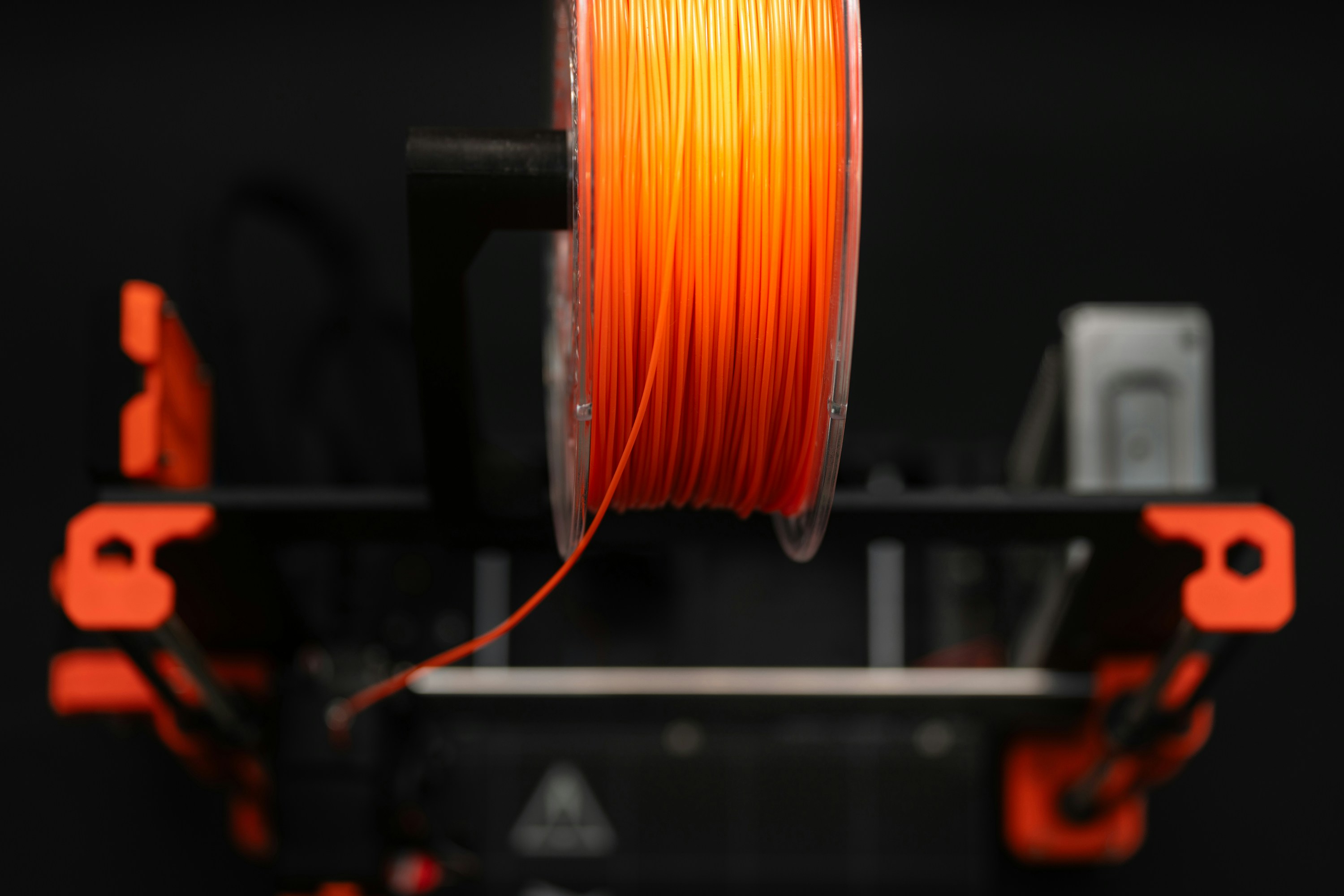
So, is Thingiverse dead? The short answer: No, but it’s limping along like a zombie in need of serious CPR. It remains a colossal archive of 3D printable models—millions of them—still accessible to anyone willing to brave its sluggish interface and occasional glitches. However, the platform’s lack of active development, security issues, and poor user experience have driven many creators and makers to seek greener pastures.
Our 3D Printed™ team strongly recommends exploring alternatives like Printables (formerly PrusaPrinters) for a vibrant, secure, and community-driven experience, or Thangs if you want cutting-edge AI-powered search capabilities. For professional-grade models, GrabCAD is unbeatable, while MyMiniFactory offers curated, guaranteed printable designs.
If you’re still holding on to your Thingiverse account, consider migrating your models to these newer platforms using their import tools or manual uploads. You don’t have to delete your Thingiverse legacy, but updating your profile to direct followers to your new home is a smart move.
And what about Thingiverse’s future? While UltiMaker’s ownership offers a glimmer of hope, don’t hold your breath for a quick resurrection. The platform needs a complete overhaul and a renewed commitment to community and security to regain its former glory.
In the meantime, embrace the diversity of the 3D printing ecosystem. The community is alive and thriving—just not all in one place anymore. So, keep printing, keep sharing, and keep pushing the limits of what’s possible!
🔗 Recommended Links: Dive Deeper into 3D Printing Resources
👉 Shop and Explore the Top Thingiverse Alternatives:
-
Printables (PrusaPrinters):
Printables on Thingiverse | Printables Official Website -
MyMiniFactory:
MyMiniFactory on Thingiverse | MyMiniFactory Official Website -
Creality Cloud:
Creality Cloud on Thingiverse | Creality Cloud Official Website -
Pinshape:
Pinshape on Thingiverse | Pinshape Official Website
Books to Boost Your 3D Printing Skills:
- 3D Printing Failures: How to Diagnose and Repair All 3D Printing Issues by Sean Aranda — Amazon Link
- The 3D Printing Handbook: Technologies, design and applications by Ben Redwood, Filemon Schöffer, Brian Garret — Amazon Link
- 3D Printing Projects: 20 Design-to-Print Projects for Your 3D Printer by DK Publishing — Amazon Link
❓ FAQ: Your Burning Questions About Thingiverse Answered
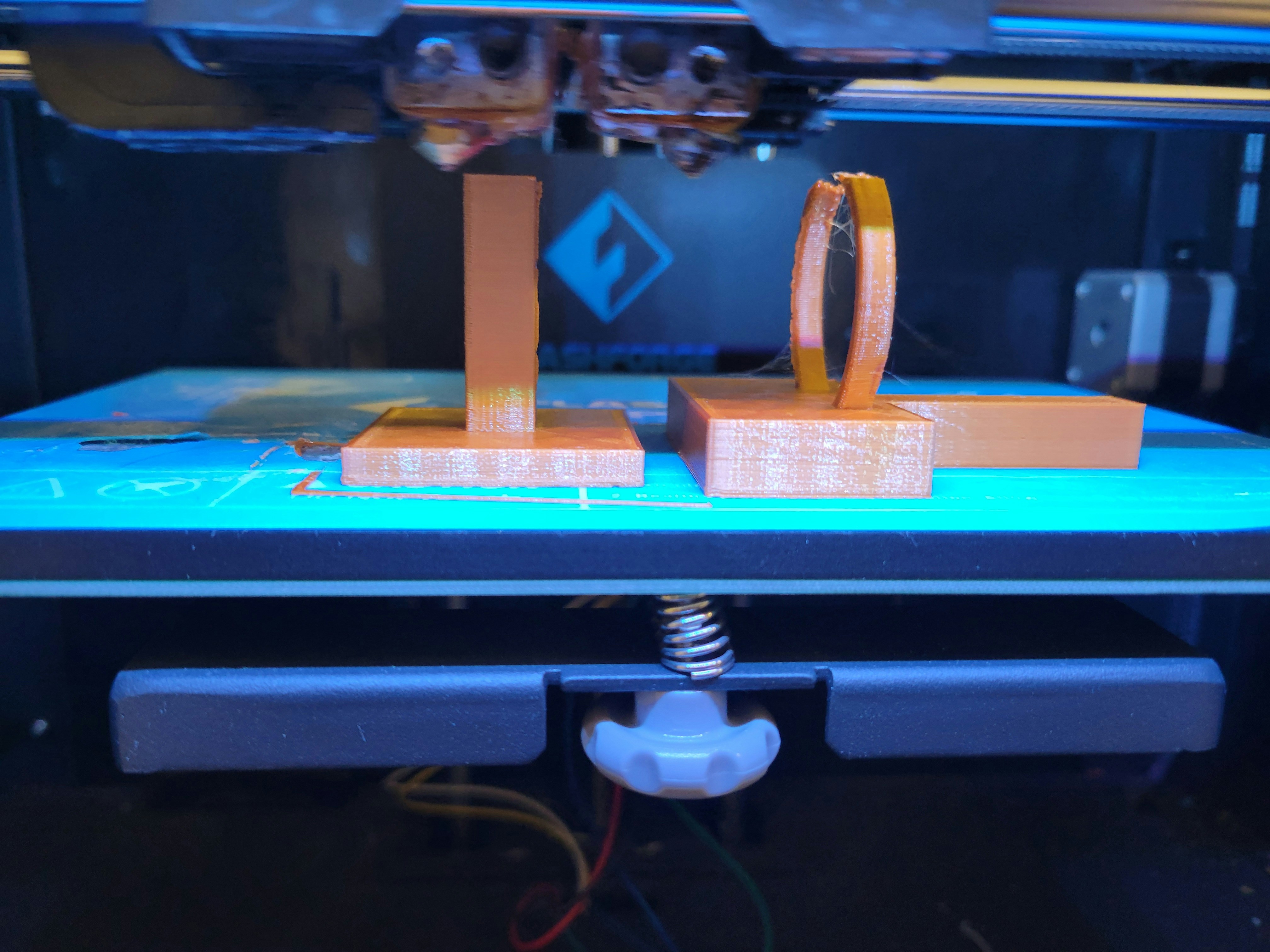
What are the best alternatives to Thingiverse for 3D printing models?
There’s no one-size-fits-all answer, but several platforms stand out depending on your needs:
- Printables (formerly PrusaPrinters): Best for community engagement, reliability, and a growing library. It’s backed by Prusa Research, which means solid support and continuous development.
- Thangs: Ideal if you want powerful AI-driven search and collaboration tools.
- MyMiniFactory: Perfect for guaranteed printable, curated models, especially if you want high-quality miniatures or tabletop gaming assets.
- Cults3D: Great for premium models and supporting designers through purchases.
- GrabCAD: The go-to for engineering and professional CAD files.
Each platform offers unique features, so we recommend exploring a few to see which fits your workflow and style best.
Read more about “12 Thingiverse Alternatives You Can’t Miss in 2025 🚀”
Is MyMiniFactory a good replacement for Thingiverse for finding 3D print files?
Absolutely! MyMiniFactory’s curation process ensures that every model is test-printed and verified, which drastically reduces print failures. This quality control is a huge advantage over Thingiverse’s more open, unmoderated library. Plus, MMF supports creators with monetization options and has a thriving community, especially for miniatures and artistic prints. The trade-off is that uploads are slower due to curation, and there is a stronger emphasis on paid content, but for many makers, the reliability and quality are worth it.
Read more about “Exciting D Printing Projects: 10 Creative Ideas to Try! 🎉”
How can I still access and download Thingiverse models if the website is down?
If Thingiverse experiences downtime or slow performance, you have a few options:
- Cached Versions: Use services like the Wayback Machine to access cached pages, although this is limited and not ideal for large file downloads.
- Third-Party Downloaders: Some community-developed tools and browser extensions can batch download Thingiverse models, but use them cautiously respecting copyright.
- Alternative Repositories: Many popular models have been mirrored or re-uploaded on other platforms like Printables or MyMiniFactory. Searching by model name on these sites can often yield results.
- Local Backups: If you’re a frequent user, it’s wise to maintain your own offline archive of essential models to avoid dependency on any single platform’s uptime.
What are the most popular 3D model repositories besides Thingiverse for makers and hobbyists?
Besides the big ones we’ve covered, here are some other popular repositories:
- Pinshape: Known for a clean interface and a mix of free and paid models.
- YouMagine: Focuses on open-source designs with strong licensing controls.
- Yeggi: A meta-search engine that aggregates models from multiple sites.
- Cults3D: For premium and artistic models.
- GrabCAD: For professional and engineering models.
Each has its own community and strengths, so it’s worth exploring multiple to find your favorites.
How secure is Thingiverse after the 2021 data breach?
The 2021 data breach exposed personal information of approximately 25 million users, including email addresses and hashed passwords. Thingiverse has since improved some security measures, but it still lacks critical features like two-factor authentication (2FA). This makes it riskier compared to newer platforms like Printables, which offer 2FA and better privacy controls. We recommend changing your Thingiverse password regularly and considering migrating to platforms with stronger security.
Can I import my Thingiverse models to other platforms easily?
Yes! Platforms like Printables offer built-in import tools that allow you to transfer your entire Thingiverse portfolio seamlessly, including model files, descriptions, and images. This is a fantastic way to preserve your work and community presence without starting from scratch. Other platforms may require manual downloads and uploads, but the process is straightforward if time-consuming.
📚 Reference Links: Sources and Further Reading
- Thingiverse Data Breach Analysis by Troy Hunt
- Prusa Research Official Website
- Thangs Official Website
- Cults3D Official Website
- MyMiniFactory Official Website
- GrabCAD Official Website
- Creality Cloud Official Website
- Pinshape Official Website
- Printables Import from Thingiverse Guide
- 3D Printing Subreddit – r/3Dprinting
- Facebook Group: 3D printer on point. Now time to paint.
Thanks for sticking with us through this deep dive! If you want to keep up with all things 3D printing, from reviews to tutorials and model recommendations, be sure to explore more on 3D Printed™. Happy printing! 🎉

